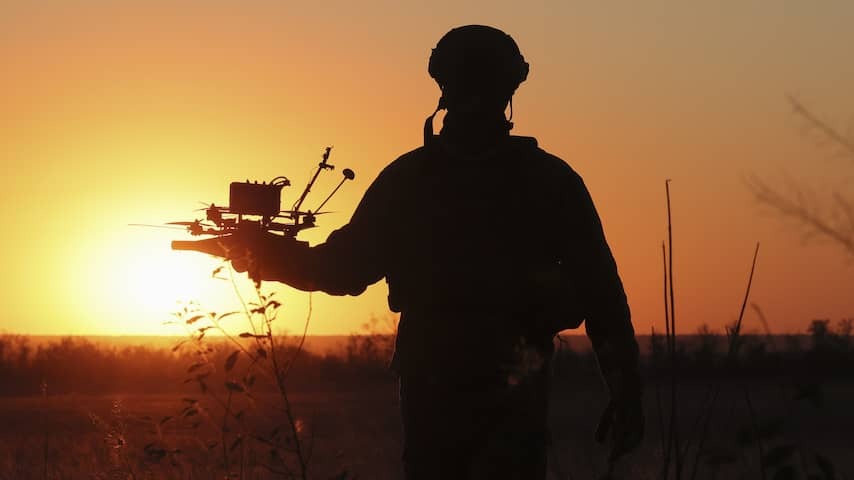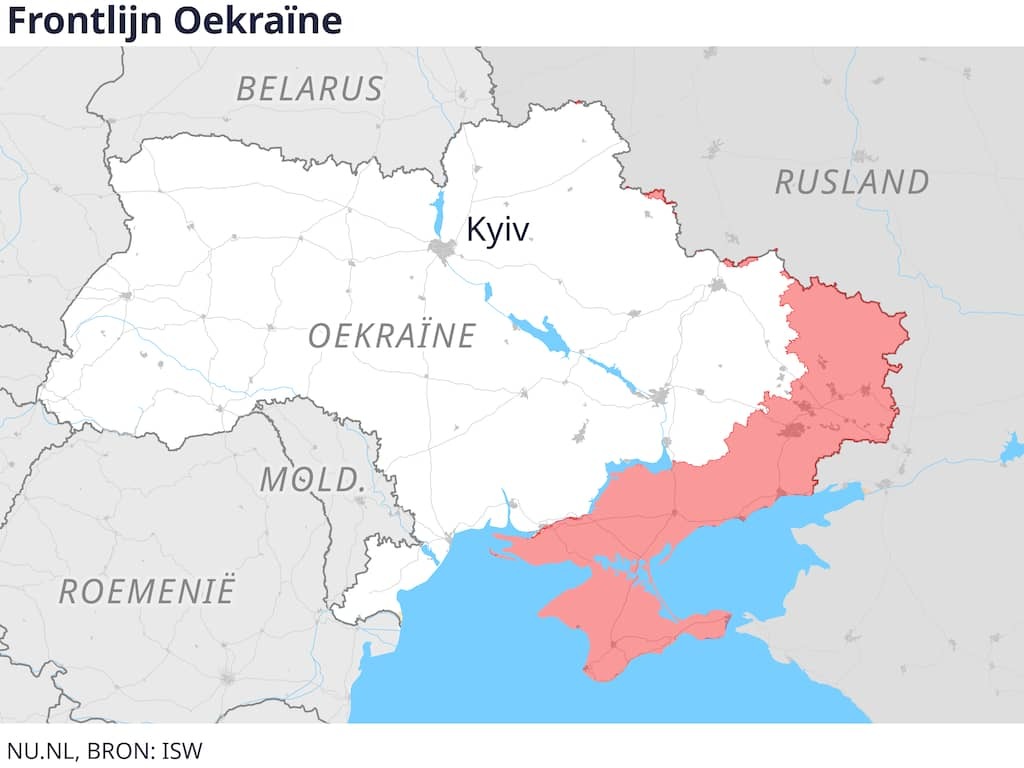
While concrete peace in Ukraine is increasingly out of sight, the battle at the front continues unabated. The war of attrition demands more and more from both Russia and Ukraine, not only on but also off the battlefield.
When the Russian tanks rolled across the Ukrainian border more than 3.5 years ago, few expected the Ukrainian army to be so resistant to the Russian superiority. However, the war is beginning to take its toll and the Ukrainian endurance is being tested in several areas.
That war of attrition is raging on several fronts, according to defense expert Bob Deen. At the front line, Russia is still slowly but surely advancing (see map below). “Those are small territorial gains at a high price,” Deen tells NU.nl, referring to the high number of casualties. Ukraine is trying to cede as little land as possible, in exchange for as many Russian casualties as possible.
Both countries continue to fight because they believe they can win in the long run. “Neither country is willing to make painful concessions at this time,” Deen continues.
Russia wants to ensure that Ukraine can no longer sustain the war. Ukraine is vulnerable because it depends on Western support, which, since Donald Trump’s inauguration in the White House, must be fully paid for by Europe. “Putin is counting on that support to crumble in the long run,” Deen explains. So far, that support from Europe has held up.

Drones have drastically changed the way of warfare
The way of warfare has changed considerably in recent years. The use of drones causes great losses and a difficult-to-penetrate front line. “Previously you sometimes saw a breakthrough of a tank unit,” says Deen. “But now you hardly see that anymore. Drones see everything and can eliminate vehicles and troops very quickly.”
Russia has recently been using so-called ‘fiber optic drones’ more and more often, according to news agency Reuters and the Institute for the Study of War. These drones are difficult to detect and hinder because they are not wireless but controlled via a kilometers-long fiber optic connection.
The range of these drones is also increasing, allowing the Russians to target logistical supply lines and villages some distance from the front line. Some drones can travel up to 50 kilometers.
In addition, Russia is stepping up drone attacks at a greater distance from the front line. Ukraine is attacked daily with hundreds of drones. Shooting down those (often cheap) Russian drones costs the Ukrainians a lot of money. The American think tank CSIS estimated the costs for this earlier this year at around 35,000 dollars (approximately 30,000 euros) per drone.
Ukraine cannot continue to suffer major losses
But the war of attrition is not only raging on the battlefield. Ukraine and Russia are also being tested at a demographic level. Russia is larger and has a better birth rate. In the long term, Ukraine cannot continue to suffer major losses. “According to current predictions, Ukraine may have fewer inhabitants than the Netherlands by the end of the century,” says Deen.
Russia also has an advantage in the field of arms production. Although Ukraine is increasingly successful in increasing its own arms production. Deen: “Meanwhile, half of the weapons that Ukraine uses are produced by itself.”
Both countries are also struggling with financial problems. Russia is hit hard by sanctions and attacks on the oil industry. There is less money available for Defense every year and the financial reserves are running out. But Ukraine is again very dependent on the West financially. Ukraine has a budget deficit of tens of billions of euros.
Zelensky is not infallible
In addition, the war of attrition is testing Kyiv at a political level. This summer, cracks appeared for the first time in the democratic authority of President Volodymyr Zelensky. A controversial law that tackled two anti-corruption services led to mass protests against the president.
Yet the impact of this should not be overestimated, nuances Eastern Europe expert Julia Soldatiuk-Westerveld. The situation surrounding the anti-corruption services is precisely proof that Ukraine is taking steps in the right direction. The law was eventually amended under pressure from the population. It is a good sign that the population feels room to express dissatisfaction.
But the protests this summer show that Zelensky is not infallible. Insiders express their dissatisfaction in The Economist about the increasingly authoritarian traits of the Ukrainian president. They say Ukraine is struggling on military, political and economic fronts.
Ukrainians are fighting for the future of their country
For the time being, an end to the war is not in sight. But there is one area where the Ukrainians seem to have a clear advantage in the long term: the morale of soldiers and citizens. Soldatiuk-Westerveld: “The population is tired of the war and the continued attacks on civilian targets. That is palpable in society. But it does not translate into less support for Zelensky.”
Deen: “Ukrainians are fighting for the future of their country.” The war is not popular among Russians and there is data indicating increasing mutinies in the army. “But the Kremlin is succeeding in keeping the consequences as far away as possible from the average Russian.”
Changes in morale can change suddenly and have major consequences. For example, Deen points to the rebellion of the deceased Wagner boss Yevgeny Prigozhin two years ago. Such a development cannot be predicted, but it can irreversibly change the future of the war.